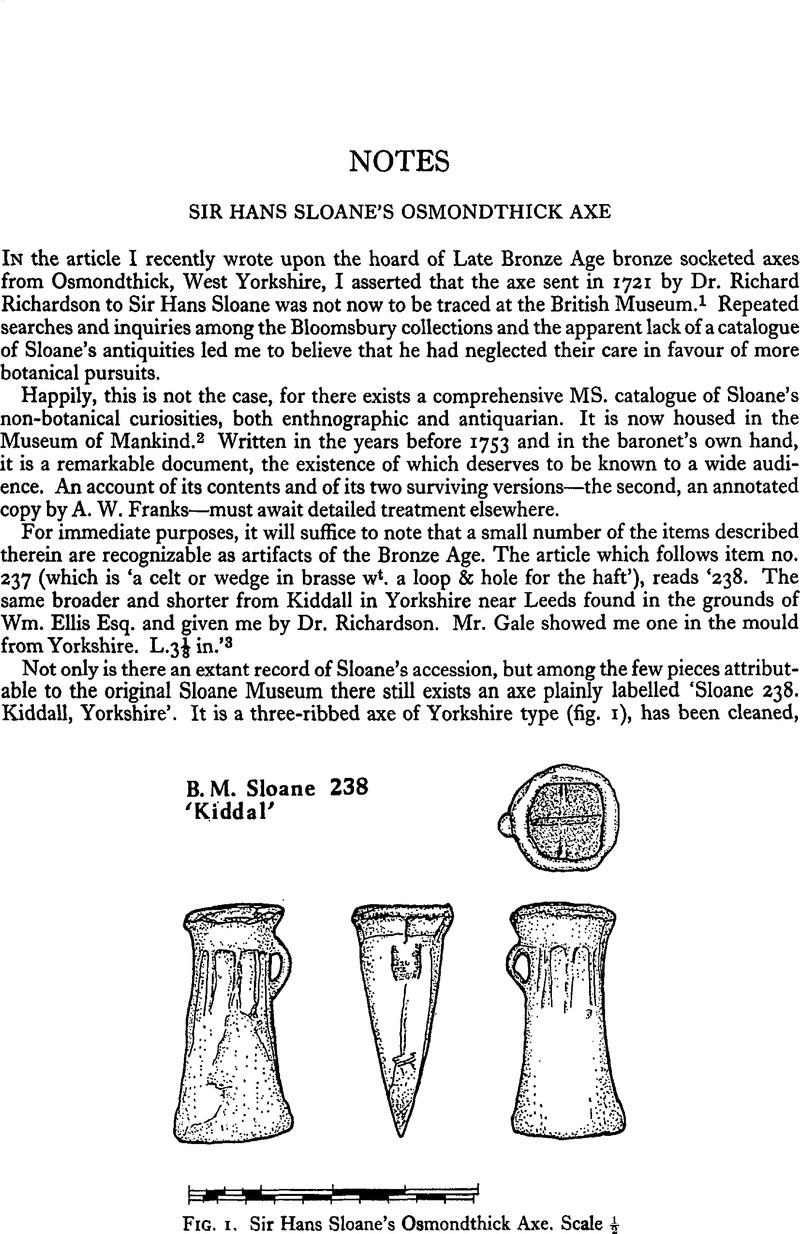Article contents
A Roman Relief-Carving of Three Female Figures, Found at Lincoln
Published online by Cambridge University Press: 29 November 2011
Abstract

- Type
- Notes
- Information
- Copyright
- Copyright © The Society of Antiquaries of London 1982
References
Notes
6 I am grateful to Mr. M. J. Jones, Director of Excavations, Lincoln Archaeological Trust, who invited my report on the sculpture; to Mr. A. J. White and Mr. T. M. Ambrose, Keeper and Assistant Keeper of Archaeology in the City and County Museum, Lincoln, for their comments on a draft of this note, and to Dr. J. P. Wild, F.S.A., who discussed details of the figures' dress with me. The stone has been identified by Malcolm Fenton, Department of Archaeology, University of Nottingham, as a fine-grained Lincolnshire limestone with shelly bands.
7 Richmond, I. A., ‘The Roman city of Lincoln’, Arch. J. ciii (1946), 54.Google Scholar
8 Religious sculptures and inscriptions may be found in extra-mural areas which were also used for burial. Mr. White has drawn my attention to York, where, as cases in point, two altars to Mother Goddesses have been found at separate sites in cemeteries south-west of the city walls: R.C.H.M., , Eburacum (1962), pp. 94, 100, and 118, nos. 38 and 42.Google Scholar
9 RIB 247. I thank Mr. White for raising the question of the Fates and the Lamiae.
10 RIB 951.
11 RIB 1331.
12 Cf. Pauly-Wissowa, , Real-Encyclopädie xii. 1 (Stuttgart, 1924), s.v. Lamiae.Google Scholar
13 Trollope, E., ‘Ancaster, the Roman Causennae’, Arch. J. xxvii (1870), 8–9Google Scholar; Frere, S. S., ‘Some Romano-British sculptures from Ancaster and Wilsford’, Antiq. J. xli (1961), 229–31CrossRefGoogle Scholar; Ambrose, T., Gods and Goddesses of Roman Ancaster (1979)Google Scholar. Frere and Ambrose also describe another relief from Ancaster which may represent Mother Goddesses.
14 I follow the identification recently proposed by Ambrose, T., op. cit., p. 2.Google Scholar Professor Toynbee, J. M. C. has also described the attributes as a dog, a fish and fruits: Art in Britain under the Romans (1964), p. 172.Google Scholar
15 British Museum, Guide to the Antiquities of Roman Britain (1964), p. 55 and pi. xix, 3Google Scholar; the findspot is unknown.
16 Toynbee, J. M. C., op. cit., pi. xliii, a.Google Scholar
17 Hill, C., Millett, M. and Blagg, T., The Roman Riverside Wall and Monumental Arch in London (London and Middlesex Arch. Soc.Special Paper iii, 1980), pp. 169–71 and pl. 50.Google Scholar
18 Schoppa, H., Römische Götterdenkmäler in Köln (1959), Tafn. 57, 62, 63, 67, 70.Google Scholar
19 Wright, R. P. and Phillips, E. J., Roman Inscribed and Sculptured Stones in Carlisle Museum (1975), no. 184, pl. vi, a.Google Scholar
20 Phillips, E. J., Corpus Signorum Imperii Romani, Great Britain I. i (1977), no. 236, pl. 63.Google Scholar
21 Ibid., no. 3, pl. 1.
22 Toynbee, J. M. C., op. cit., pl. xlviii, b.Google Scholar
23 Colyer, C., ‘Excavations at Lincoln 1970–1972: the western defences of the lower town:an interim report,’ Antiq. J. lv (1975), pl. xxxviiia.Google Scholar
24 Arch. J. xlii (1885), 261Google Scholar; Toynbee, J. M. C., op cit., pi. xli, b.Google Scholar
25 See also Ambrose, T. and Henig, M., ‘A new Roman rider-relief from Stragglethorpe, Lincolnshire’, Britannia, xi (1980), 135–8.CrossRefGoogle Scholar
- 2
- Cited by




